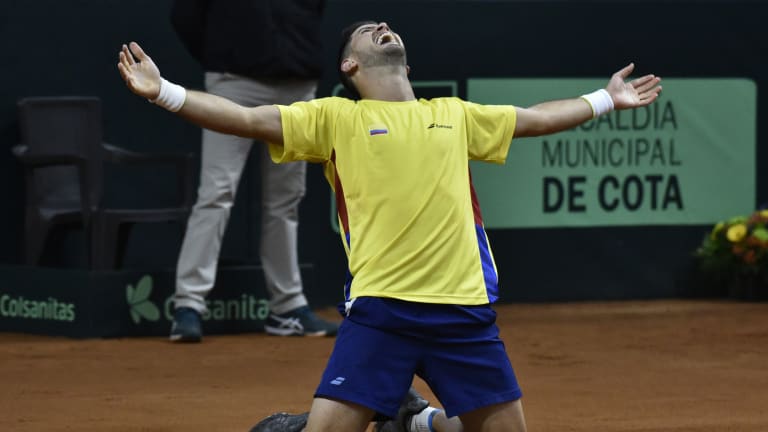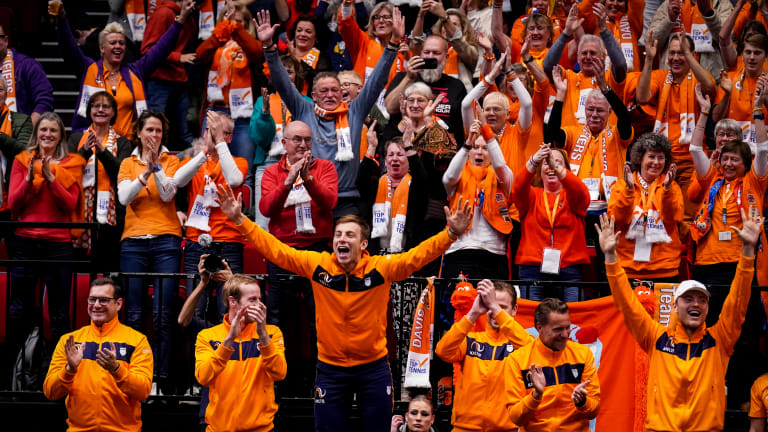Davis Cup
Even after three gloomy years, the Davis Cup spirit is very much alive among fans and players
By Feb 06, 2023Davis Cup
Argentina reaches Davis Cup Final 8 after tense win over Finland
By Sep 15, 2024Davis Cup
Stan Wawrinka's vintage clincher for Switzerland among Davis Cup qualifying highlights
By Feb 05, 2023Davis Cup
New-look U.S. Davis Cup team rolls to victory in 2023 Qualifier
By Feb 04, 2023The Business of Tennis
Garbiñe Muguruza returns to Madrid as co-tournament director
By Dec 13, 2025Social
Alexandra Eala carries flag for Philippines at 2025 SEA Games
By Dec 12, 20252025 Year In Review
Victoria Mboko and Janice Tjen among players honored by ITF for 2025 breakthroughs
By Dec 12, 20252025 Year In Review
WTA Match of the Year, No. 1: Amanda Anisimova comes of age in Aryna Sabalenka Wimbledon stunner
By Dec 12, 20252025 Year In Review
WTA Match of the Year, No. 2: Victoria Mboko escaped Elena Rybakina, and drove her home fans berserk, in Montreal Cinderella run
By Dec 12, 2025Player News
Retired Rafael Nadal jokingly "withdraws" from 2026 Australian Open after right hand surgery
By Dec 12, 2025Even after three gloomy years, the Davis Cup spirit is very much alive among fans and players
Can the storied team competition go home—and away—again?
Published Feb 06, 2023
Advertising
Advertising

With this reaction, you'd think Mejia won a Grand Slam title. Nope—he won the opening rubber for Colombia in its Davis Cup qualifier against Great Britain.
© Getty Images
Advertising
Advertising

The crowds, and their reactions, say it all about Davis Cup.
© Getty Images